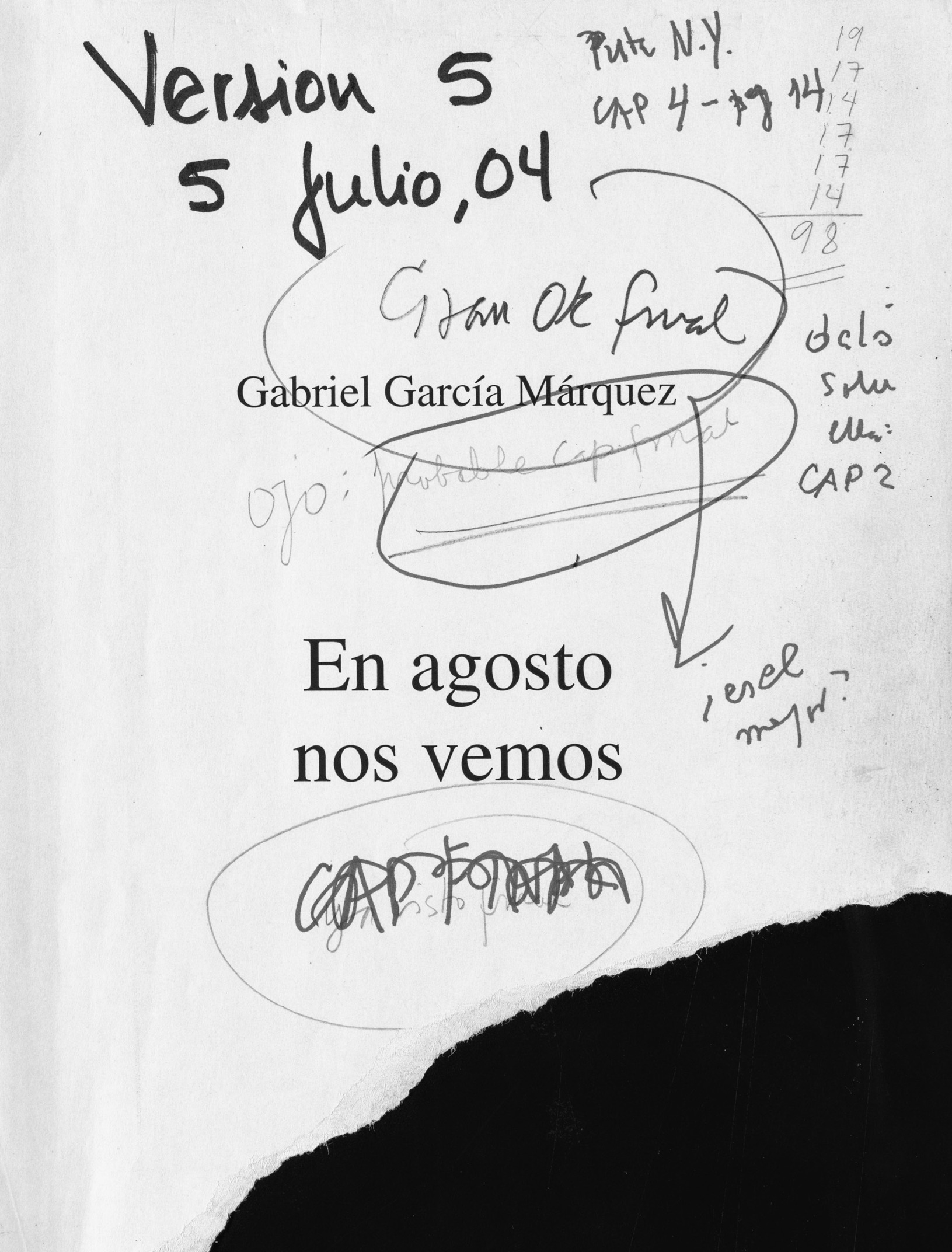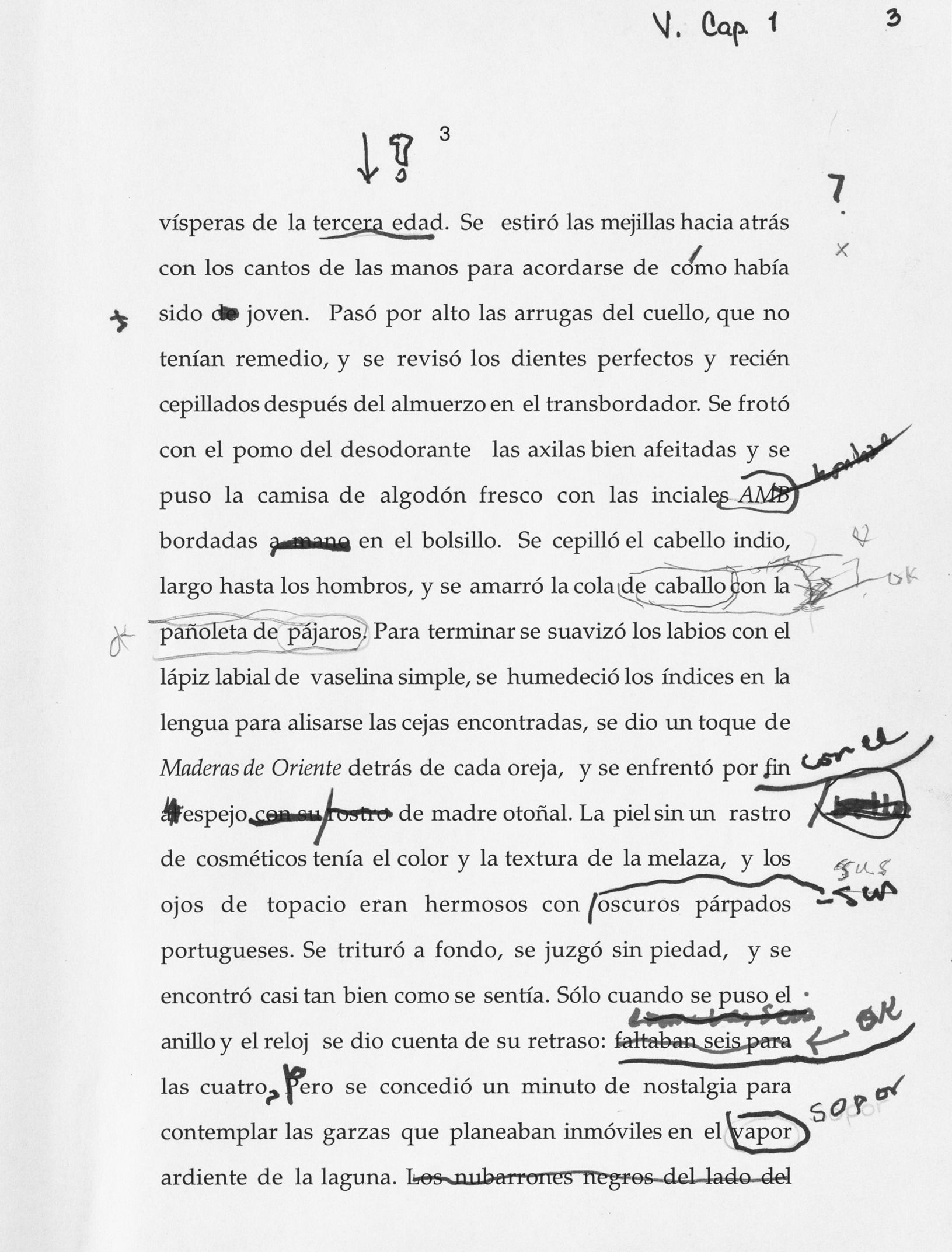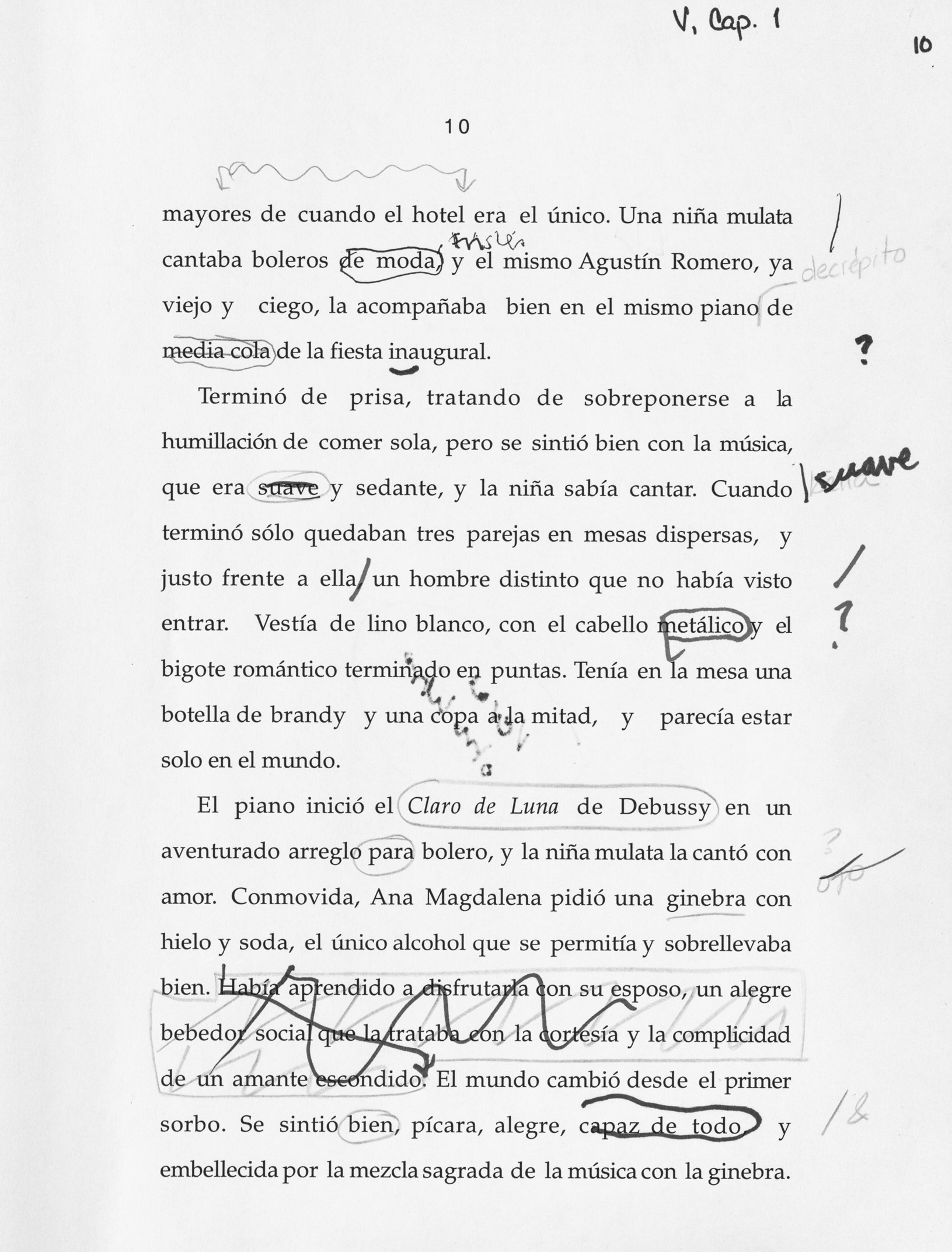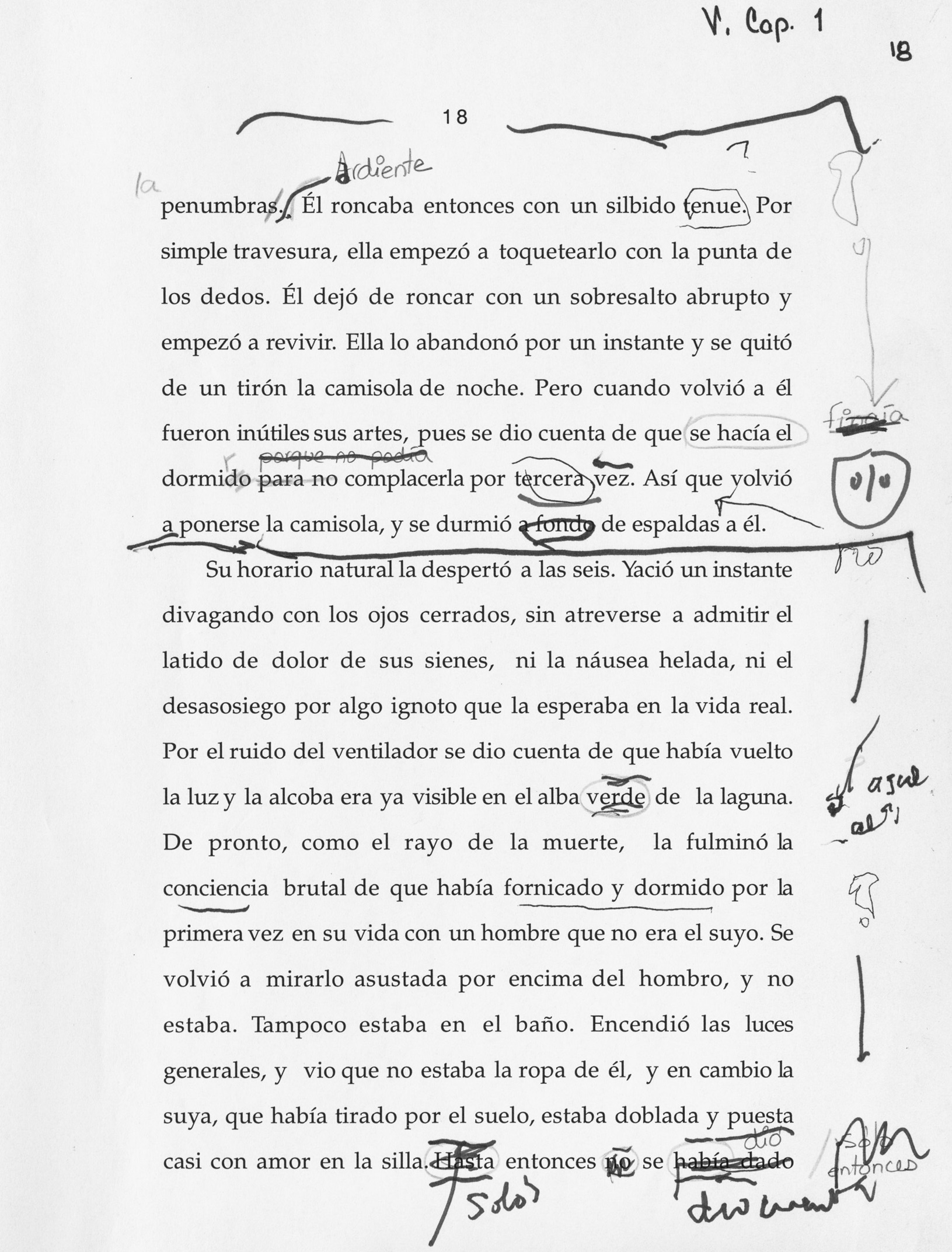THE ORIGINAL MANUSCRIPT
FOUR FACSIMILE PAGES
Here are four sample facsimile pages from the file labeled “Version 5” of En agosto nos vemos. These files were sorted and classified by García Márquez’s secretary, Mónica Alonso, who also maintained a Word document from which the different versions gradually emerged. In his last years, when he could no longer work on his overall vision of the novel, García Márquez made small corrections, suggestions, and changes to other versions, that were consolidated in this version, on which he wrote “Gran OK final.”

The title page of Version 5
In his final years, García Márquez merged his annotations from previous versions onto this version. Even though on this first page it says “Gran OK final,” the version still contains fragments that were corrected in the Word document kept by his secretary, Mónica Alonso.

Page 3 of Version 5
On this page we can see some corrections that García Márquez added to his text in later readings. The reference to the protagonist being on the verge of “la tercera edad” or “the third age” appears with a question mark above it and disappears from the final edition, as Ana Magdalena Bach is forty-six years old. The digital version contains other small variations.

Page 10 of Version 5
The reference to the “bigote romántico terminado en puntas” or “romantic pointed moustache” worn by the man from chapter one disappears from the final edition. In chapter six, Ana Magdalena Bach runs into the same man in the city, but it takes her a while to identify him because he’d been clean-shaven when she’d met him: “Only then did she realize that maybe she hadn’t been able to recognize him because of the musketeer’s moustache, which he did not have at the time.”

Page 18 of Version 5
On this page, as on many others, we can see corrections in the handwriting of García Márquez’s secretary, Mónica Alonso. Here Mónica adds the adjective “ardiente.” It was usual in some sessions for her to read the text aloud, and García Márquez would ask her to add a note to change something here or there. At the same time, other changes would be put into the digital version, such as the doubt about the adjective “tenue,” which eventually became “continuo.”